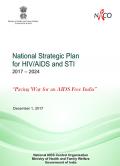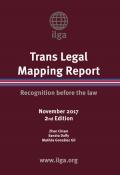What's New
Displaying results 1961 - 1970 of 4914

Resource | Publications,
According to the findings from this review, KPs value and recognise PrEP as additional protection against HIV infection (part of combination prevention programme). However, the perceived benefits and concerns around PrEP were motivated by the specific needs and experiences of the different KP groups. A few cross-cutting issues emerged, highlighting areas which need to be addressed for easier PrEP uptake. Among the key issues raised were concerns around safety and potential side effects, effectiveness, cost, potential adherence challenges, and the need to address all forms of stigma, discrimination and criminalisation which act as barriers to HIV services.

Resource | Publications,
In 2017, the International Treatment Preparedness Coalition (ITPC) embarked on an initiative to develop and implement innovative community-led demand creation solutions for access to and use of oral pre-exposure prophylaxis (PrEP) of HIV by key populations. This initiative included a preliminary literature review of global community perspectives on PrEP, the Community-led Consultative Think Tank Meeting on PrEP, and development of the Key Population Activist Toolkit on PrEP.

Resource | Reviews and Snapshots,
This provides an interactive report with colourful infographics and bite-size information on the HIV epidemic and response on key populations at higher risk of HIV in Papua New Guinea.

Resource | Guidelines,
The vision of the NACO is that of ‘Paving the way for an AIDS free India’ through ‘attaining universal coverage of HIV prevention, treatment to care continuum of services that are effective, inclusive, equitable and adapted to needs’. The goals remain those of the ‘Three Zeros’ - i.e. zero new infections, zero AIDS-related deaths and zero discrimination which form the basis of this strategic plan.

Resource | Publications,
To inform the content of the meeting, ITPC undertook a Literature Review to collate and examine views from key populations on use and access to PrEP. Key findings of the suggested that there is general acceptability and demand for PrEP among KPs as an additional option for HIV prevention within a comprehensive approach. However, there are a number of concerns, risks and barriers that will need to be addressed for successful PrEP uptake.

Resource | Publications,
The right to health is the right of everyone to the enjoyment of the highest attainable standard of physical and mental health, as enshrined in the 1966 International Covenant on Economic, Social and Cultural Rights. This includes the right of everyone, including people living with and affected by HIV, to the prevention and treatment of ill health, to make decisions about one’s own health and to be treated with respect and dignity and without discrimination.
Everyone, regardless of who they are or where they live, has a right to health, which is also dependent on adequate sanitation and housing, nutritious food, healthy working conditions and access to justice.

Resource | Publications,
The assessment consisted of a descriptive cross-sectional study to assess stigma level (quantitative part), in-depth interviews to describe views from people living with HIV who are in positive networks (qualitative part), and a desk review to identify the supportive legal and policy frameworks and other available services for people living with HIV.

Resource | Fact Sheets,
The report provides health information on maternal and child health attendances, sexually transmitted diseases, infectious diseases, etc.

Resource | Laws and Policies,
This report distinguishes between “sex/gender marker change” and “name change” processes, laws and policies. Although the authors recognise that trans and gender-diverse people often do seek name change as part of their social transition or self-affirmation process, the distinction is made because the processes are often entirely separate, sometimes involving different pieces of legislation or policies. It is in the interests of precision that this distinction is in place throughout the report.






